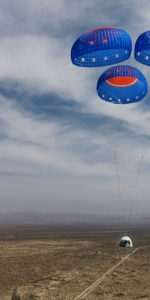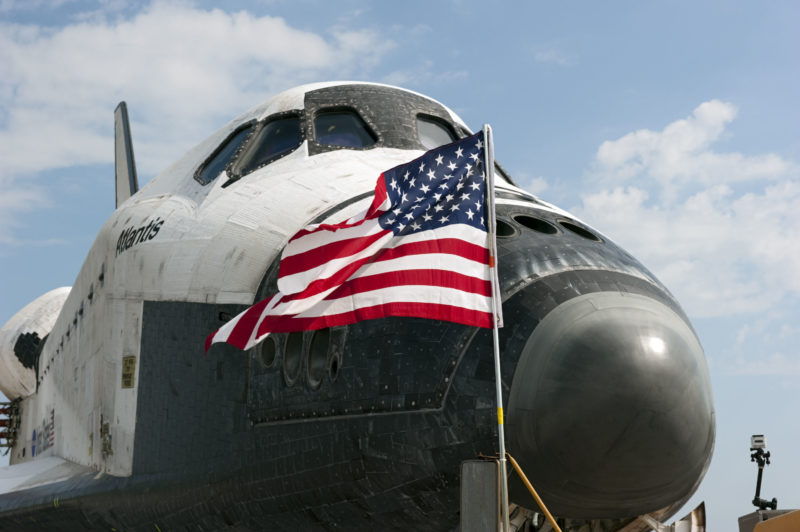
A string of “Go” calls—interspersed with an occasional poignant remark about the contributions of the Space Shuttle Program across three decades of service—reached the ears of Launch Director Mike Leinbach, seated at his console in the Launch Control Center (LCC) at the Kennedy Space Center (KSC) in Florida on the morning of 8 July 2011.
All stations, from the Orbiter Test Conductor (OTC) to the Superintendent of Range Operations (SRO) and from the Safety Console to STS-135 Commander Chris Ferguson, seated on shuttle Atlantis’ flight deck, confirmed to NASA Test Director (NTD) Jeff Spaulding that they were ready to launch the 135th and last mission of the program. Ten years ago today, the shuttle took flight under her own power for the final time.
The ship which sat on history-steeped Pad 39A that morning was almost indistinguishable from the Atlantis which first rocketed into orbit on Mission 51J in October 1985. However, across a lengthy career of orbital flight, Atlantis had secured her reputation as the second most-flown shuttle and had cemented her credentials as the “heavy-lifter” of the fleet.
She had hauled half of the massive Integrated Truss Structure (ITS) to the International Space Station (ISS), as well as delivering three key pressurized facilities, including the U.S. Destiny lab and Europe’s Columbus lab. Now long-retired, her legacy circles the globe at this very moment, home to seven spacefarers and forerunner to humanity’s future exploratory forays beyond low-Earth orbit.
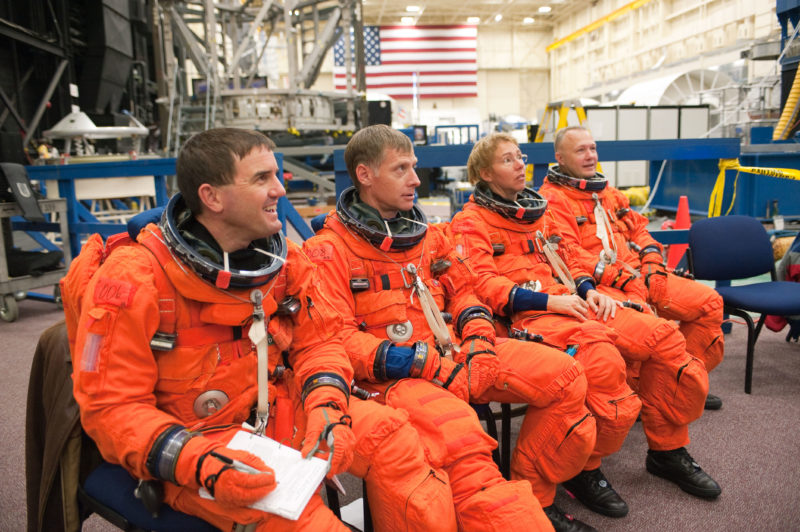
After passing through the Go/No-Go calls, and with all stations declaring no constraints to launch, Leinbach radioed Ferguson.
“Atlantis, Launch Director. Air-to-Ground-1.”
“Atlantis, Go,” replied Ferguson, a veteran of two previous shuttle missions, former deputy chief of the Astronaut Office and now skipper of the first four-member crew to ride a U.S. piloted spacecraft since April 1983.
Seated alongside Ferguson was Pilot Doug Hurley, whilst at the back of the tiny flight deck were Mission Specialists Sandy Magnus and Rex Walheim. Between them, the four astronauts had seven prior flights, five spacewalks and a long-duration ISS expedition to their credit.
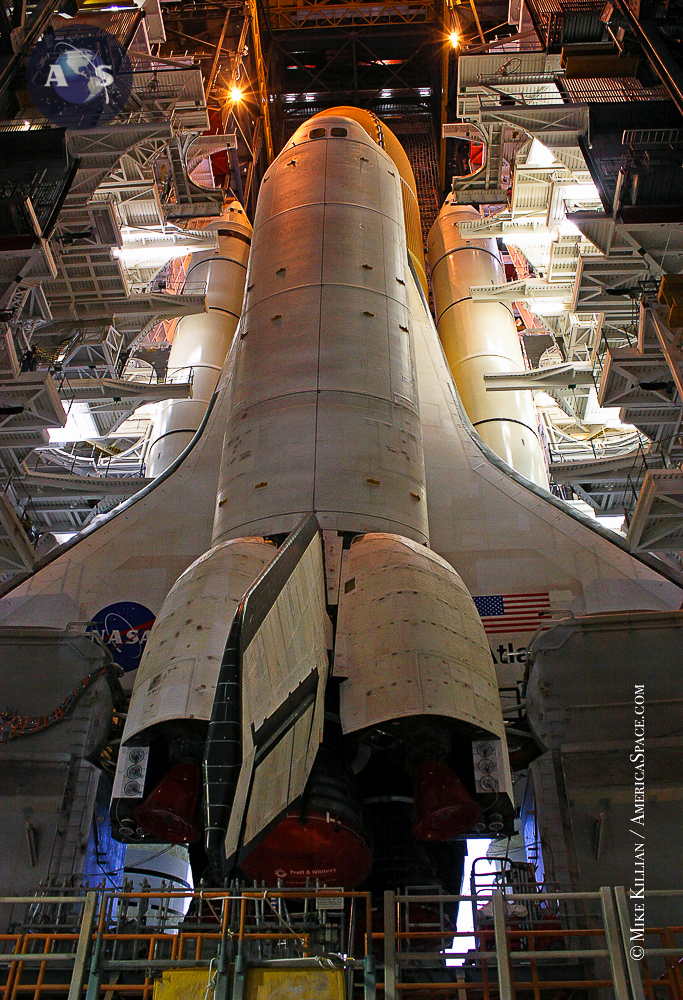
“Okay, Fergie, we’re starting to feel pretty good down here on the ground about this one today, so on behalf of the greatest team in the world, good luck to you and your crew on the final flight of this true American icon. And so, for the final time, Fergie, Doug, Sandy and Rex, good luck, Godspeed and have a little fun up there!”
“Thanks to you and your team, Mike,” said Ferguson. “Until the very end, you all made it look easy. The crew of Atlantis is ready to launch.”
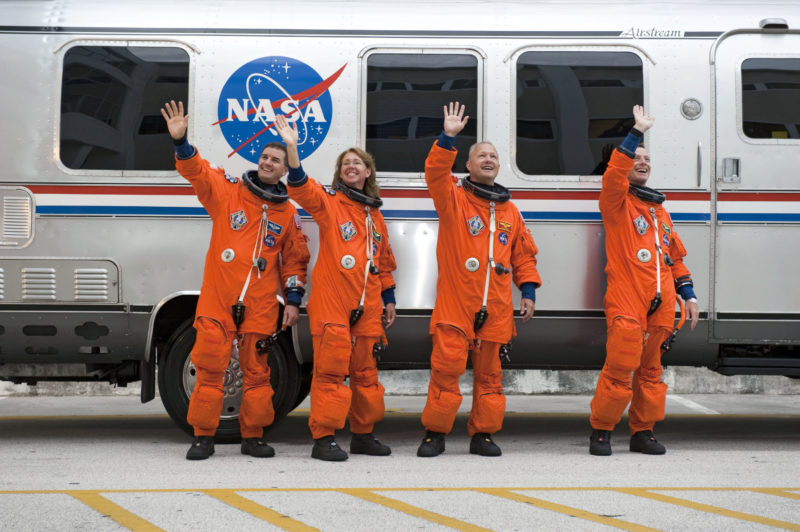
Shortly afterwards, the clock was released from its hold point at T-9 minutes and the Ground Launch Sequencer (GLS) autosequence was initiated. In the excitement-tinged minutes which followed, the hive of activity entered high gear.
From the pilot’s seat, Hurley connected essential power buses to the fuel cells and began the process of pre-starting Atlantis’ trio of Auxiliary Power Units (APUs), providing the vehicle with mechanical muscle. By T-5 minutes, he declared “Three good APUs.”
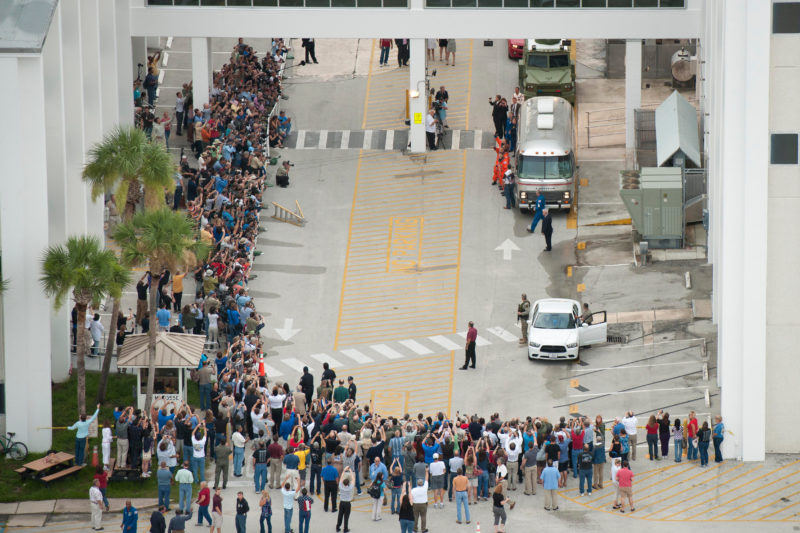
In the meantime, the Orbiter Access Arm (OAA), bearing the “white room”, was retracted from the shuttle, and the External Tank (ET) hydrogen and oxygen tanks were pressurized for flight.
Atlantis’ cluster of three Space Shuttle Main Engines (SSMEs) were put through an extensive sequence of gimbal exercises, to verify their readiness for launch, and the gaseous oxygen vent hood (the “beanie cap”) was retracted from the top of the ET.
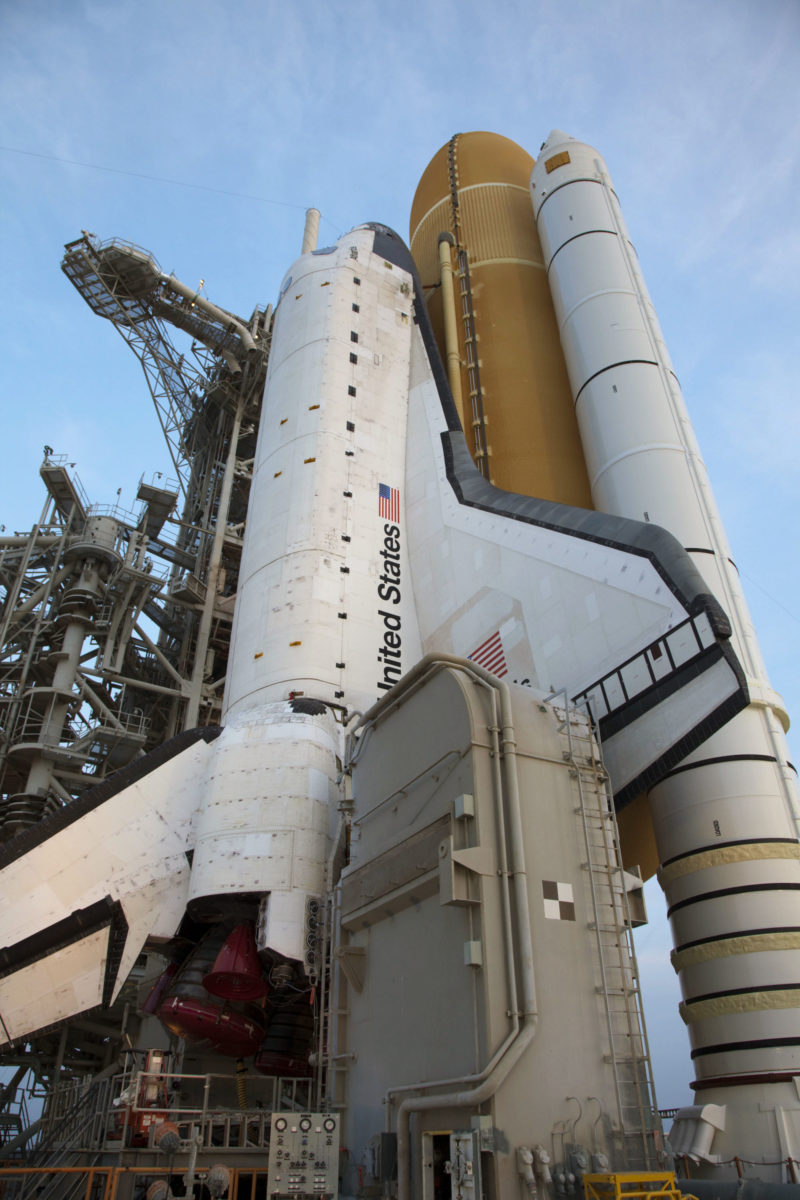
The minutes ticked on. Now, with around two minutes to go, Hurley cleared the shuttle’s Caution and Warning memory and verified no unexpected errors, after which all four astronauts closed their helmet visors and initiated the oxygen flow to their pumpkin-orange pressure suits.
With 75 seconds remaining, the sound suppression system—which would dump 300,000 gallons (1.4 million liters) of water from four giant “rainbirds” onto the surface of the Mobile Launch Platform (MLP) to reduce the reflected energy at liftoff—was armed.
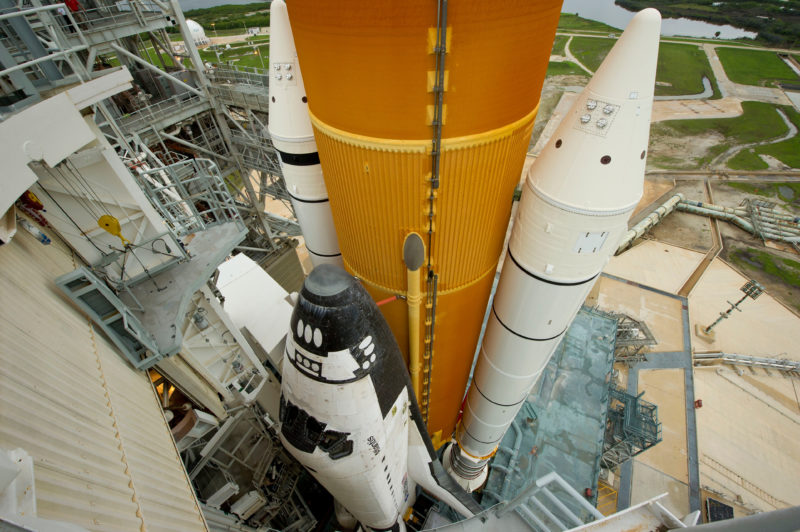
Liquid oxygen and hydrogen fill-and-drain valves were closed for flight, as all eyes monitored the Cape’s famous countdown clock, as it progressed toward the “hand-off” of vehicle functions from GLS to Atlantis’ computers at T-31 seconds.
However, it seemed that after 134 shuttle missions in 30 years, which had garnered a range of emotions, from the calamities of Challenger and Columbia to the glories of servicing the Hubble Space Telescope (HST) and building the ISS, the gremlins of fate still had one more card to play on 8 July 2011.
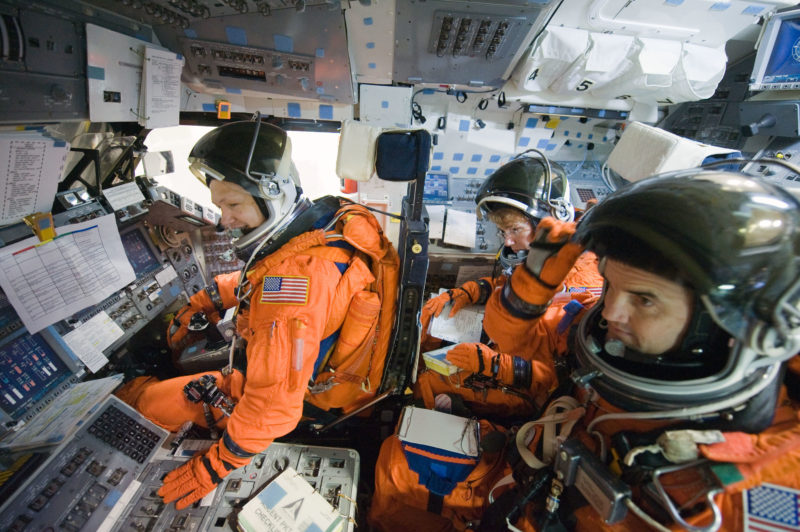
“Clock will hold at T-31 seconds, due to a failure,” came the call from Janine Pape, at the GLS console. No indication had been received that the gaseous oxygen vent arm had retracted from the vehicle and properly latched.
With only 3.5 minutes of hold time left in STS-135’s tight, five-minute “launch window”, it was critical that the problem be resolved quickly. Camera 62 was remotely reoriented to ascertain that the vent arm had indeed fully retracted, but hearts were in throats as a scrub and 24-hour turnaround seemed likely.
Nine hundred miles (1,500 km) away, in the windowless Mission Control Center (MCC) at the Johnson Space Center (JSC) in Houston, Texas, a team of mission controllers under Ascent Flight Director Richard Jones tensed in their seats. “FIDO,” the flight director radioed the Flight Dynamics Officer, “we’re holding at 31.”
A few minutes later, Pape cleared the hold. Calling the NASA Test Conductor over Channel 212 of the Operational Intercommunications System, she reported: “NTD, CGLS on 212, we’re ready to go”. And moments thereafter, the clock was released to continue counting from T-31 seconds.
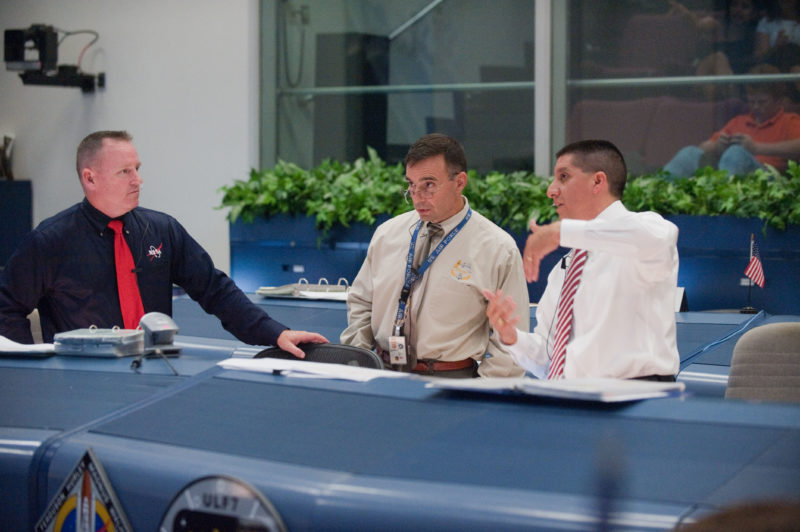
The familiar voice of NASA Public Affairs Officer (PAO) commentator George Diller brought news of the final milestones to a worldwide audience and around a million visitors at the Cape for the historic swansong flight of both Atlantis and the entire shuttle program.
“Firing Chain is armed,” said Diller at T-15 seconds. “Go for Main Engine Start…”
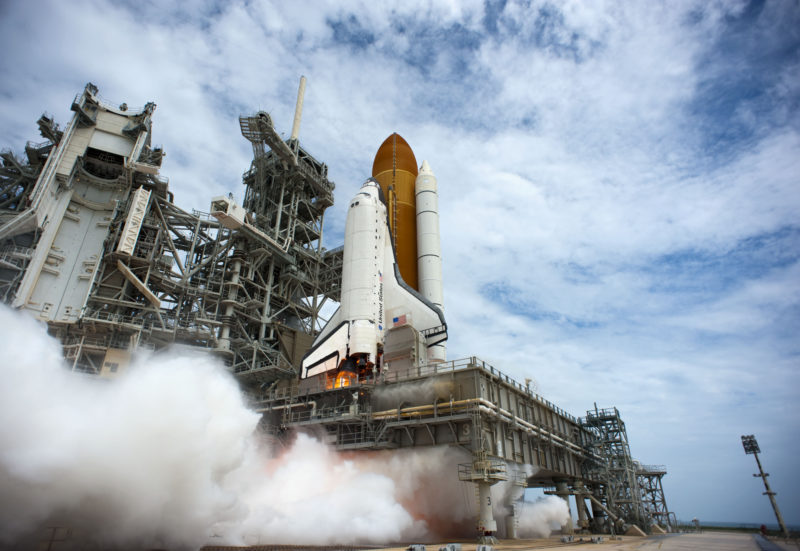
At T-10 seconds, for the final time, a flurry of hydrogen burn igniters swirled beneath the three SSME bells, ahead of the onset of the ignition sequence at T-6.6 seconds, generating a sheet of translucent orange flame and a trio of dancing Mach diamonds as exhaust gases flowed from the engines at 13 times the speed of sound.
“…all three engines up and burning…” continued Diller.
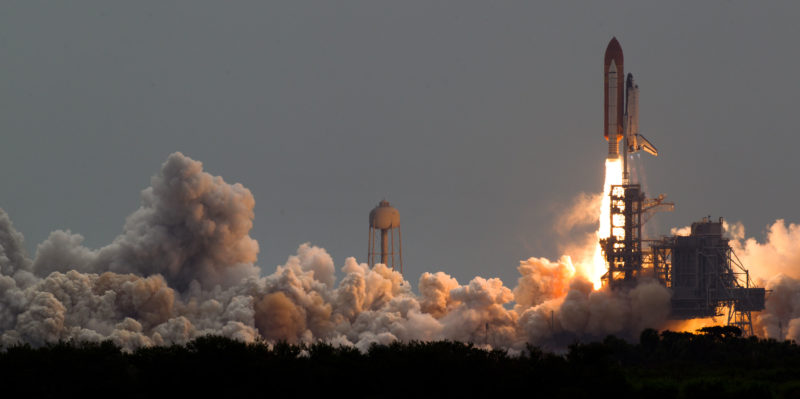
Flexing against the struts which anchored her to the ET—in a phenomenon nicknamed “the twang”—Atlantis seemed to strain for her last leap toward the stars.
“…two, one, zero and Liftoff…the final liftoff of Atlantis,” exulted Diller. “On the shoulders of the Space Shuttle, America will continue the dream!”
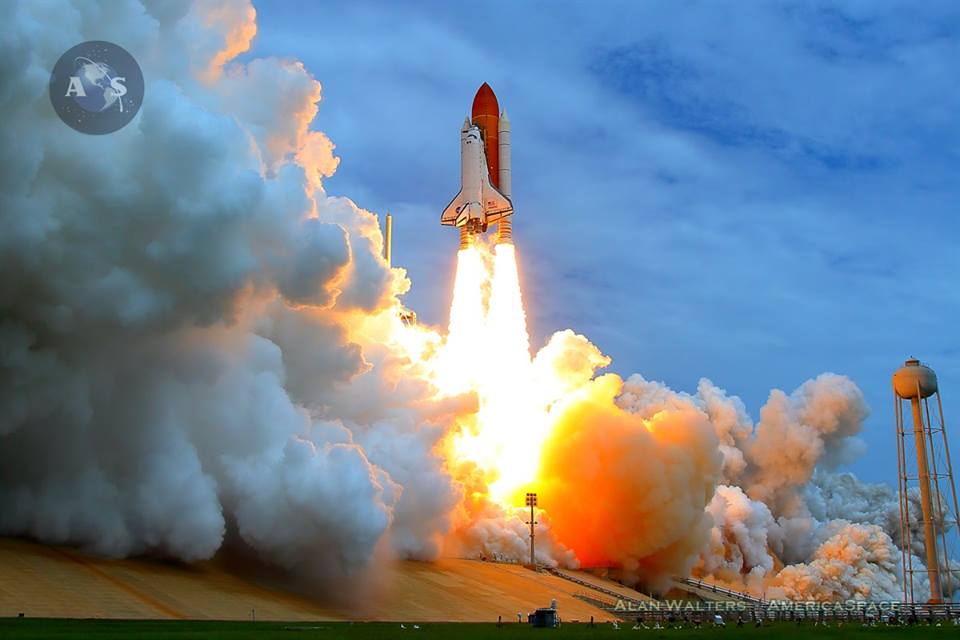
It was 11:29 a.m. EDT, ten years ago to this very day.
After almost ten months of training as a crew and three hours on their backs in Atlantis’ cockpit, tempered by the agonizing hold at T-31, the joy was evident in Chris Ferguson’s voice as he yelled out the “Roll Program, Houston” call at T+10 seconds.
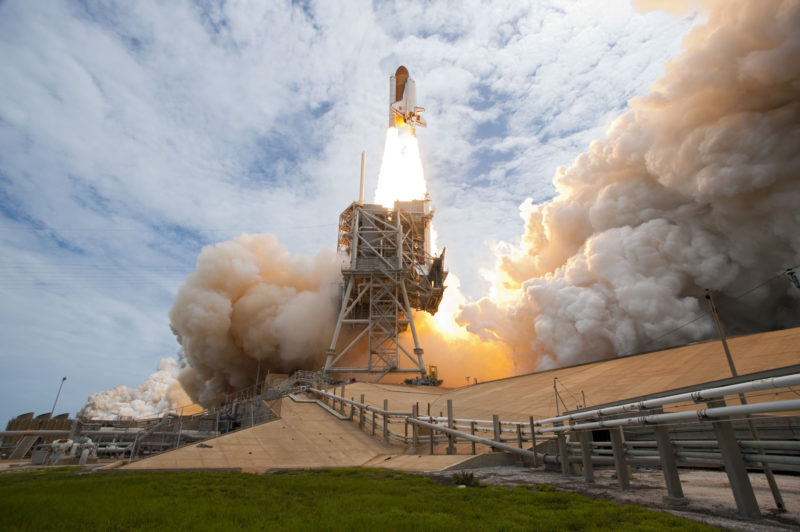
“Roger Roll, Atlantis,” came the reply from Capcom Barry “Butch” Wilmore, clad in a dark shirt and red tie and seated immediately to Jones’ right side in Mission Control.
Narrated uphill by NASA PAO Rob Navias, Atlantis cleared the launch tower and rose into the clear morning sky, kicking off “a sentimental journey into history”.
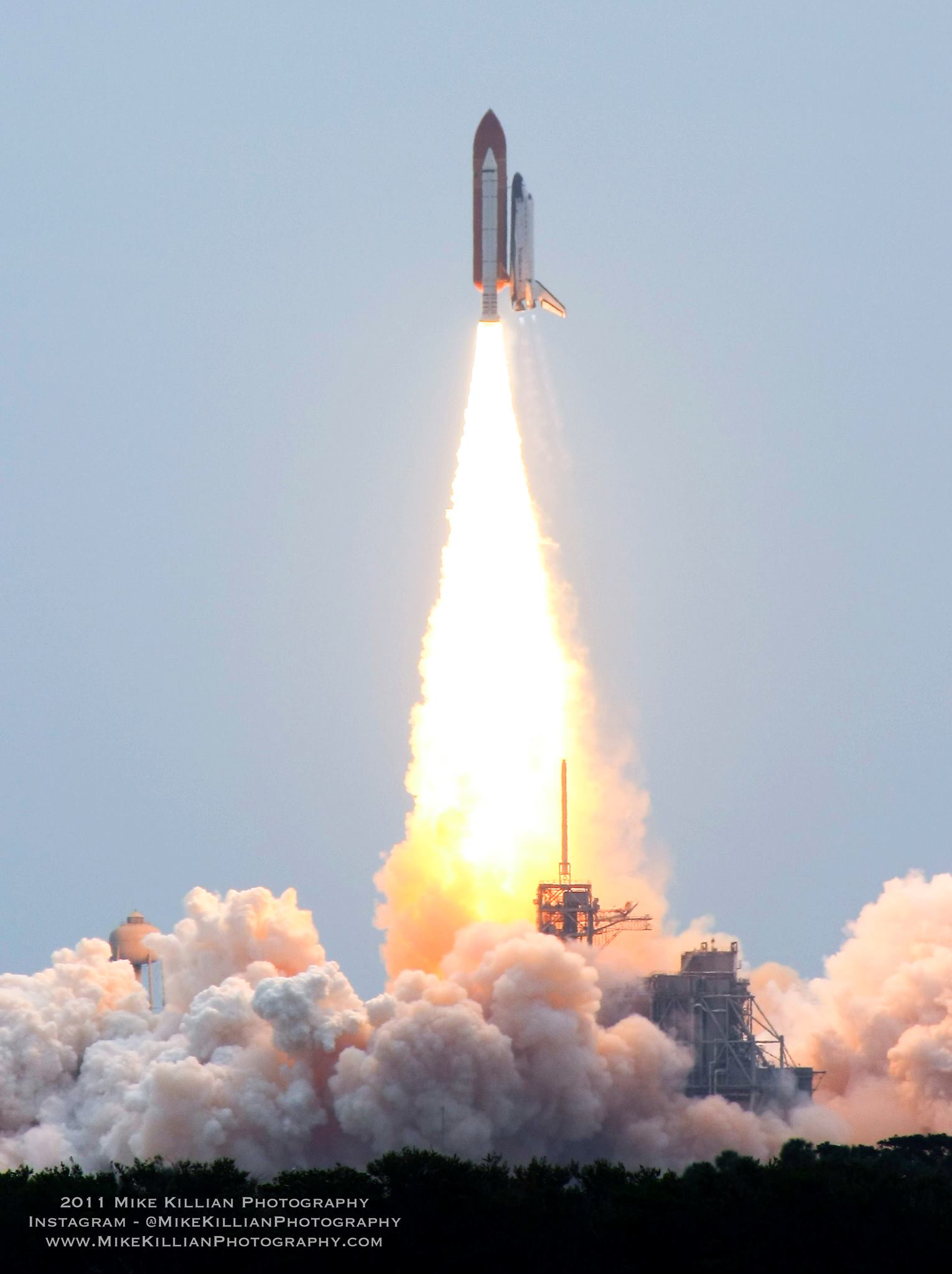
Flying in a heads-down, wings-level orientation, a failed transducer, requiring no action, was the only event which marred an otherwise perfect ascent.
For the 33rd time, Atlantis had given her crew a smooth voyage to orbit. And for the next 13 days, STS-135 would play a critical role in stocking the ISS for the post-shuttle era.
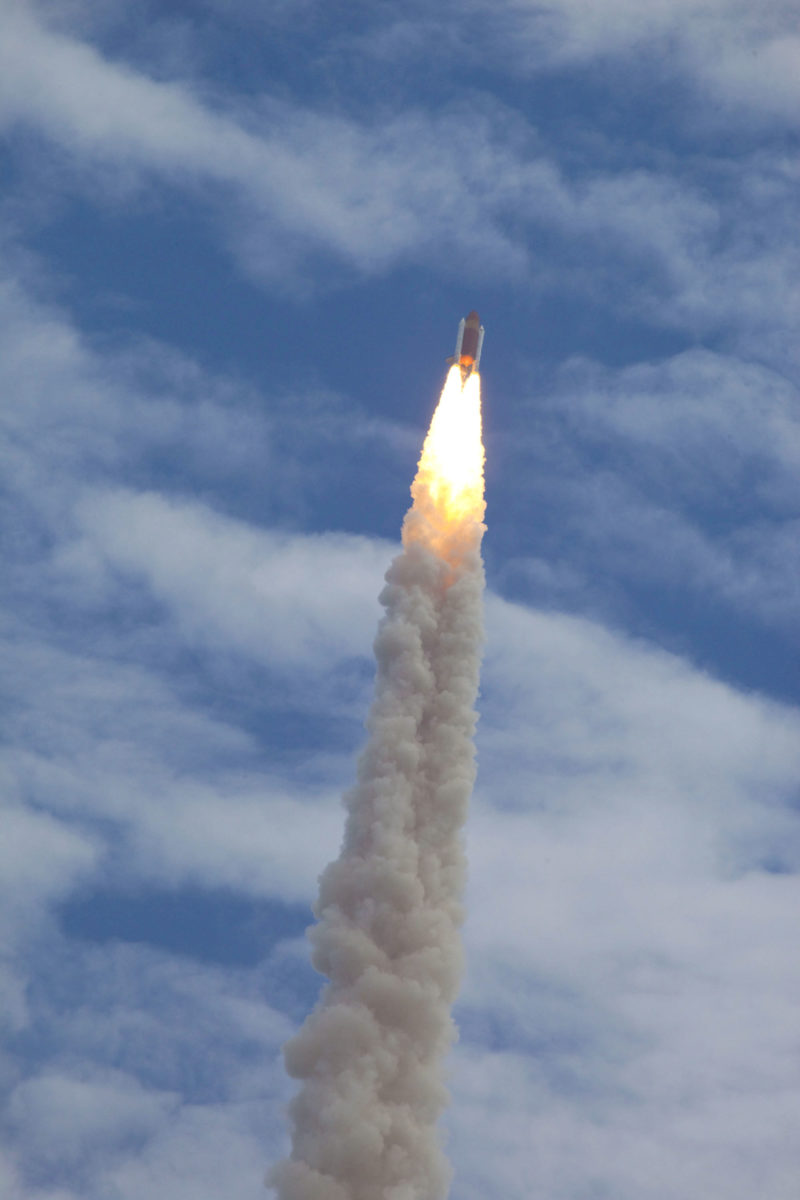
Returning to Earth on 21 July 2011, Atlantis logged a cumulative 306 days in space over her 33 missions and traveled almost 126 million miles (202 million km).
Her stellar career saw her conduct more Department of Defense assignments and more dockings with Russia’s Mir space station than any other shuttle, as well as sending two planetary probes—Magellan and Galileo—on their way to Venus and Jupiter and servicing Hubble for the final time.
Additionally, Atlantis delivered nearly half of the ISS solar arrays and truss structure, together with three of the station’s major pressurized modules: the U.S. Destiny lab, the Quest airlock and Europe’s Columbus lab.
And two years after STS-135, in June 2013, she began her 34th and final mission, as the starring exhibit in a dedicated $100 million facility at the Kennedy Space Center Visitor Complex (KSCVC), serving to enthuse and inspire future generations of scientists, engineers, teachers, explorers, and dreamers. And, with this in mind, perhaps “Mission 34” will be Atlantis’ most important and far-reaching assignment of all.




